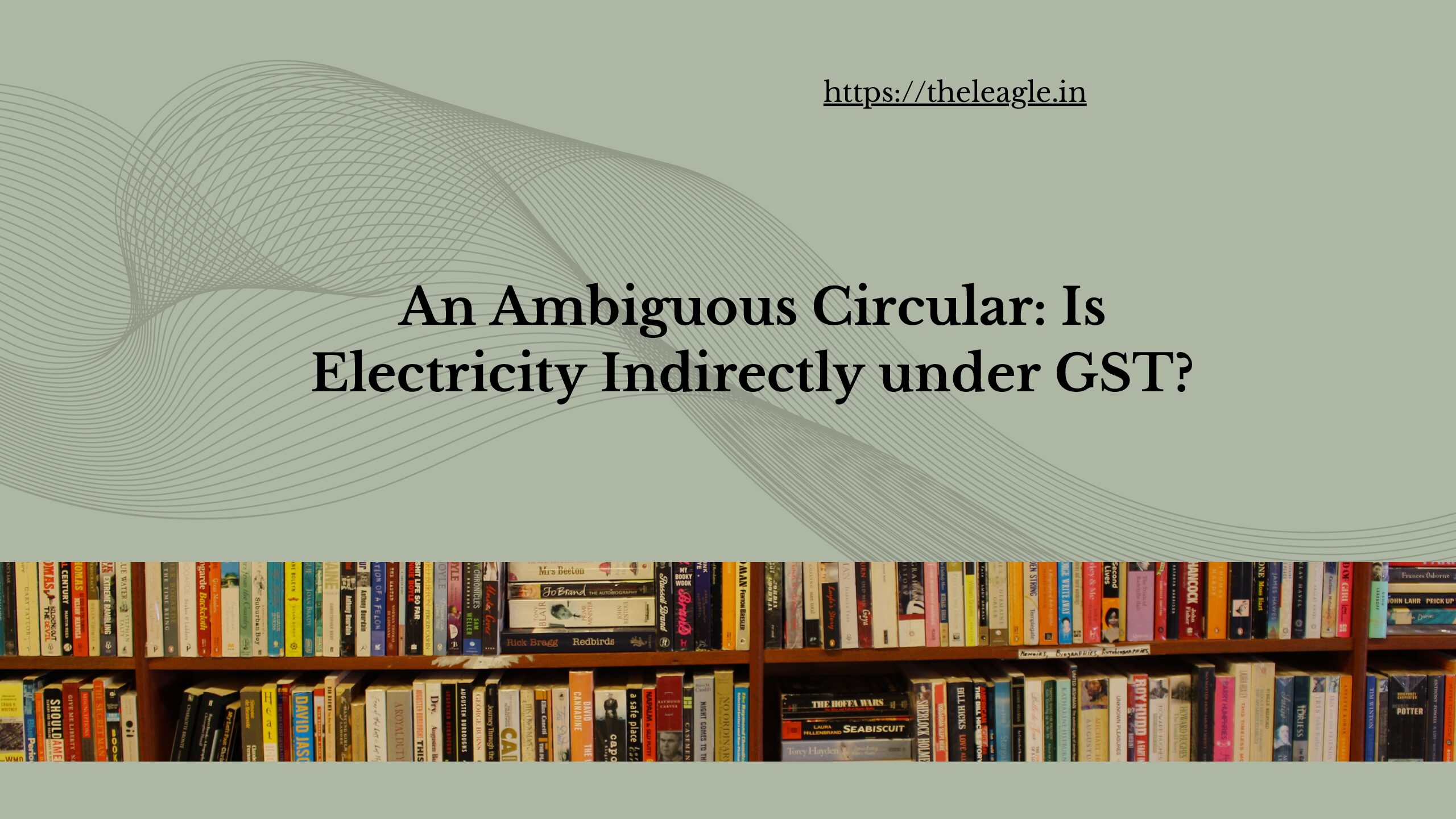On 31.10.2023, CBIC issued a Circular clarifying the applicability of GST on certain services. The Circular, inter alia, clarified one issue which is the focus of this article. The issue, as framed by the Circular, was: Whether GST is applicable on reimbursement of electricity charges received by real estate companies, malls, airport operators etc. from their lessees/occupants? The Circular instead of clarifying the issue has raised further questions about the immediate GST implications on the transactions and is an example of the larger issue afflicting Indian tax policy: making rather than clarifying law through Circulars.
Separate Invoices Are Immaterial
The first transaction that the Circular mentions is supply of electricity by real estate companies, airports, malls, etc. to their occupants. The Circular mentions that if electricity is supplied as part of a composite supply then it shall be taxed accordingly. Section 2(30), CGST Act, 2017 defines composite supply to mean a supply made to a taxable person consisting of two or more taxable supplies of goods or services, which are naturally bundled together and supplied in conjunction with each other, in the ordinary course of business, one of which is a principal supply. And that the applicable GST rate is that of the principal supply. The first issue is that electrical energy is exempt from GST under Notification No. 2/2017 – Central Tax (Rate) (See Serial No. 104). Since electrical energy is exempt, it cannot, in my view, be included in a composite supply since the essential condition for a composite supply is that it should include two taxable supplies. An exempt supply cannot indirectly be transformed into a taxable supply by a Circular by treating it as an ancillary of a composite supply.
The Circular curiously adds that even if electricity is billed separately, the supply will constitute a composite supply and shall be billed at the rate of principal supply, i.e., renting of immovable property. This position is again questionable, especially if one accounts for a previous Circular issued in June 2018. Serial No. 2 of the Circular answered the question: how servicing of cars involving both supply of goods and supply of services are to be treated under GST? The Circular clarified that where supply involves both supply of goods and supply of services and their value is shown separately, the goods and services will be liable to tax at the rates as applicable to such goods and services separately. Why is the position different if invoice for supply of electricity is issued separately? Why shouldn’t supply of electricity and renting of immovable property, be liable to GST at their applicable rates if they are billed separately? A cynical view would suggest that it is because if electricity is billed separately, it would be treated as an exempt supply, but if it is included in a composite supply it allows levy of GST on supply of electricity. One thing is evident that the Circular of 2018 and Circular of 2023 do not show a consistent view on taxability under GST if separate invoices for goods and services are issued.
Pure Agent Acquires a New Meaning
Paragraph 3.3 of the Circular of 2023 invokes the concept of pure agent and is worth citing in full:
However, where the electricity is supplied by the Real Estate Owners, Resident Welfare Associations (RWAs), Real Estate Developers etc., as a pure agent, it will not form part of value of their supply. Further, where they charge for electricity on actual basis that is, they charge the same amount for electricity from their lessees or occupants as charged by the State Electricity Boards or DISCOMs from them, they will be deemed to be acting as pure agent for this supply.
The first and second sentences seem to refer to the pure agent in varied terms. The first sentences aligns with Rule 33, CGST Rules, 2017 which states that expenditure or costs incurred by a supplier as a pure agent of recipient of supply shall be excluded from the value of supply. The latter sentence introduces a deeming fiction wherein the real estate owners, real estate developers, etc. are ‘deemed to be acting as pure agent’ if they charge for electricity on an actual basis. Does this mean that in this particular instance, the conditions specified in Rule 33, CGST Rules, 2017 for a person to be considered as a pure agent need not be satisfied? While a deeming fiction can be introduced, it is suspect if a Circular can introduce a deeming fiction bypassing the conditions specified in the Rules. A more prudent approach would have been to amend the Rule 33 if the intent was that certain entities were to be treated as pure agents irrespective of whether they fulfil the conditions specified in the said Rule. For now, we do not know if the Circular should prevail over the Rules or vice-versa, introducing an avoidable layer of indeterminacy on the issue.
Conclusion
The impugned Circular, in so far as it sought to introduce clarity on the applicability of GST on electricity charges has, in my view, not achieved its objective. In fact, it has introduced more uncertainty. And apart from the ambiguity that the Circular has introduced, this is an apt example of law making through Circulars. The statutory provisions and the relevant Rules do not, in any manner, support some of the clarifications issued by CBIC through its Circular. In fact, it is an exercise of law making with the Circular stating certain legal positions and articulating interpretations that cannot be directly linked to the parent statute. This leaves GST policy at the mercy of convenient interpretations that may find favor with CBIC at a particular point.
